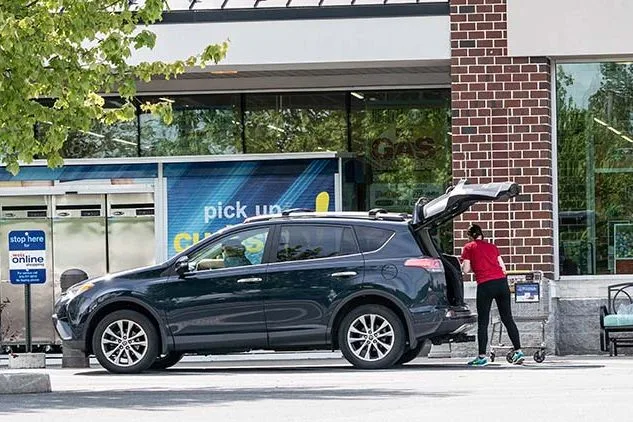Key Takeaways for Curbside Pickup and the Evolving Retail Landscape
What’s the key for retail success in 2020? Retailers that harness the power of omnichannel and curbside pickup will be the front runners this holiday season.
What’s the key for retail success in 2020? Having the right technology that allows you to remain agile and flexible is a big part of the equation. In fact, retailers that harness the power of omnichannel and curbside pickup will be the front runners this holiday season and heading into Q1.
But there’s more to it than technology and customer delivery options. In a new eCommerce Chat with Digital Commerce 360: Curb Appeal: The Inside Lane on Curbside Pickup, Bill Quinn, senior vice president of digital commerce at Hibbett and Prashant Bhatia, senior vice president technology services at Radial, discussed tactics for executing a smooth curbside operation and how to stay nimble in our evolving retail environment. Here are some key takeaways:
Focus on the Customer Experience
Curbside pickup has been a huge hit among consumers for three main reasons: it’s convenient, they don’t have to risk exposure, and they save time. But like everything that is newly introduced, there have been some hiccups. As more and more retailers adopt this option, the lesson to learn is it’s crucial to focus on the customer experience.
And when it comes to the customer experience, attention to detail is weighed heavily. Shoppers want clear instructions for picking up, parking, and timing. And they want to know this before they arrive. Set expectations early by including pick up instructions in order confirmation emails and updating your website and your app if you have one. Make sure it is clear to everyone what you are doing and the process they should follow to use the service. This goes for employees as well. You’ll need to train your store associates and anyone else that will be involved in curbside pickup so they not only can execute the service, but also easily field questions from customers.
Bonus tip: when you designate parking spaces for curbside, make sure they are clearly marked (and not just by a piece of paper) and include information like the phone number to call or text upon arrival, or to revisit the app to signal arrival. The most important element to remember is to over communicate without making it complicated.
The Right Technology Does Matter
It’s great to have a process and communication plan in place, but if you don’t have the right technology, you risk not having the inventory available at the time promised or available at all. This not only frustrates your customers, but your employees too. With a robust order management system, you’ll be able to accurately pinpoint what inventory you have, where it is, and how quickly it can arrive to your designated shipping location.
As a bonus, an OMS helps retailers become more flexible, especially with inventory segmentation. Previously, retailers were used to placing their inventory in buckets: in-store and online. These buckets were based on predictions of store traffic and online traffic. Since COVID, brands have had to get creative in providing inventory that was stuck in areas that couldn’t sell or ship products due to restrictions. Part of the creative solution was using stores as fulfillment nodes. This allows retailers to dip into the bucket for store inventory to provide the customer what they wanted and, in some cases, reach them faster.
Without an OMS, retailers wouldn’t be able to quickly switch on and off physical locations for fulfillment while still maintaining accurate inventory counts.
Agility Needs Infrastructure
With any strategic shift, there’s risk. Teams who are open and willing to try new ideas are those who will continue to see progress. This starts by crafting a culture of innovation – encourage your employees to come up with ideas to help improve processes or the customer experience. But don’t just ask for opinions and ideas, put some in place to test. Identify key metrics you want to focus on to measure the success of your omnichannel strategies. Then, use the data to help you pivot when necessary and don’t be afraid to try new tactics – you never know when something will resonate with the customers.
The Biggest Takeaway: Just Start Somewhere
If there’s one thing you need to focus on, it’s to just start somewhere rather than not starting at all. Waiting for perfection hinders progress and, in this environment, where you need to move quickly, you don’t have that luxury. Consider partnering with a third party that has experience quickly adapting to changing needs.
In any case, put yourself in the shoes of the customer: would you rather buy from a retailer that is actively working to get you the goods you need with a process that may have some bumps but is clearly communicated to you or, would you rather buy from a retailer that seems paralyzed by indecision, doesn’t have what you need and can’t give you answers? You might argue brand loyalty as an excuse for customers to choose the latter option, but loyalty preferences have also changed.
As we continue to see the effects of COVID unfold, retailers should keep in mind: the focus should be placed on the customer experience, having the right technology makes a world of difference, and building a culture that’s willing to innovate will be the differentiators moving forward. Check out the replay for more.
